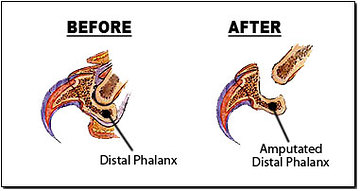Declaw Statement
Friends of Strays Animals Shelter is strongly opposed to declawing cats for the convenience of their owners or to prevent damage to household property and considers it a form of mutilation. The only circumstance the procedure should be considered is when it is necessary for medical purposes, such as the removal of cancerous nail bed tumors.
Why do Cats Scratch?
- Exercise: Scratching helps strengthen your kitty’s front legs, back and shoulders. It’s one way for cats to stretch and maintain strong muscles throughout their life. Kind of like kitty yoga.
- Conditioning the Nail: Your cats claws shed off layers every so often. Scratching is their way of removing the outer layer of the claw to reveal the fresh layer underneath.
- Scent Marking: Cats leave their own unique scent markers with the glands in their paw pads when scratching. This is how they claim their territory and/or favorite scratching post.
- Stress Relief: Cats use scratching as a means of expressing themselves. It can be an emotional release for when they are happy, anxious, frustrated, or excited.
- Self Defense: Claws are a cats main defense mechanism. If for any reason your cat were to end up in the outside world, they would need their claws for survival.
What is Declawing?
Declawing is the amputation of the last bone on each toe. The surgery includes the risk of anesthesia, excessive bleeding, and post-operative complications such as pain, infection, lameness, or back pain.

Side effects of declawing
Physical effects:
Declawing changes the way your cat’s feet hit the ground when they walk or run. This can cause pain in the foot, and since the cat must learn to walk and move differently it can cause back pain, joint stiffness, and arthritis later on. There is also the chance of infection, or claw regrowth if the surgery isn’t done correctly.
Behavioral and Psychological Effects:
- Losing their primary defense, and now in pain, many declawed cats begin biting.
- Litter box aversion is also a potential result of declawing. Since digging around in the litter box may be difficult for painful paws, it can cause the cat to eliminate elsewhere.
- Declawed cats exhibiting unwanted behaviors are frequently surrendered to shelters.
What can you do to prevent unwanted scratching?
- Get scratching posts, and try more than one.
- There are cardboard, carpet, sisal rope, and wood. Some are vertical, some are horizontal. Experiment to discover which kind your cat prefers.
- Place catnip on the scratching post to promote interaction.
- Play with your cat on the post to encourage scratching on it.
- When he does scratch on the post, reward with treats and praise.
- Keep your cats nails trimmed every 2-3 weeks.
- Purchase artificial nail caps – Soft Paws, which are plastic caps that cover your cats natural nail and last about 4-6 weeks.
- Place double-sided tape or aluminum foil on furniture you wish your cat would stop scratching.

